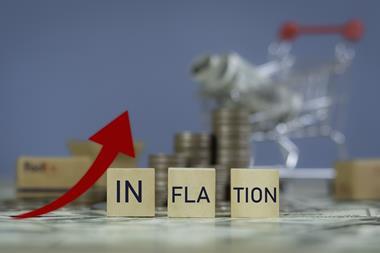Sponsored content: Ashley Easen, consulting director at Gallagher Bassett, shares her tips on keeping down claims costs in the ongoing inflationary environment
The recent surge in inflationary pressures has shocked the insurance industry, posing significant concerns for financial stability and operational losses. In response, the Bank of England has stressed to chief actuaries of general insurance firms the urgent need to address claims inflation, solvency risks and increased vulnerabilities.

The UK’s cost inflation rate reached 8.7% in June 2023, influenced by social, economic and geopolitical factors. Insurers can no longer rely solely on historical claims data for accurate reserving and claims adjustment.
This piece highlights the top three insurance lines most affected by inflationary pressures and provides information to help your firm understand the vulnerabilities and aid insurers in adapting their strategies to achieve financial stability and deliver on policyholder promises.
Property
Property claims inflation significantly impacts sums insured and settlement costs. General price increases are attributed to the availability and cost of labour, materials, energy and haulage costs.
The Covid-19 pandemic has exacerbated these issues, creating supply chain disruptions, increased demand following project delays and construction worker shortages.
The cost of construction materials has also risen sharply – on average by 4.7% in April 2023 compared to April 2022 – with shortages of essential products like bricks, blocks and cement.
Contractors face high demand and can selectively opt for more profitable work over insurance repair jobs, creating backlogs, delays and impacting business interruption indemnity periods. This puts sums insured under pressure and drives up costs for all parties.
Motor
The Covid-19 pandemic initially caused a 70% to 80% decline in motor claims – benefiting insurers but adversely affecting the accident repair sector.
As traffic volumes resumed motor claims increased, although not to pre-pandemic levels due to differing driving patterns and behaviours.
The shortage of new and second-hand vehicles has spiked vehicle theft, resulting in higher claims. Rising energy prices have also increased courtesy vehicle costs and changing staffing demographics further impact the motor repair industry.
Personal injury
A recent case heard in the Coventry Combined Court addressed the impact of inflation on awards for pain suffering and loss of amenity (PSLA) in personal injury claims.
The court recognised the significant increase in inflation and decided the brackets for PSLA in the Judicial College Guidelines (JCG) should be adjusted.
The drop in the value of money since April 2022 necessitates an approximate 12% increase in the JCG figures. This change in circumstance due to inflation will impact the assessment of damages and offers made for PSLA. Insurers need to consider inflationary factors when assessing claims in order to control indemnity spend.
Keeping costs down
To mitigate the impact of inflation on claims costs, insurers can adopt several strategies –
- Early intervention can lower overall claims costs
- Data analytics, which make for better informed decisions
- Prompt settlement, which can also minimise costs
- CCTV or dashcam and witness statements, which help to tackle fraud
- Reviewing reserves regularly
Inflation continues to pose challenges for insurers, with rising costs of goods, materials and energy affecting various insurance lines. Insurers must seek out efficiencies in claims management and develop strategies to control costs.

Hosted by comedian and actor Tom Allen, 34 Gold, 23 Silver and 22 Bronze awards were handed out across an amazing 34 categories recognising brilliance and innovation right across the breadth of UK general insurance.




















































